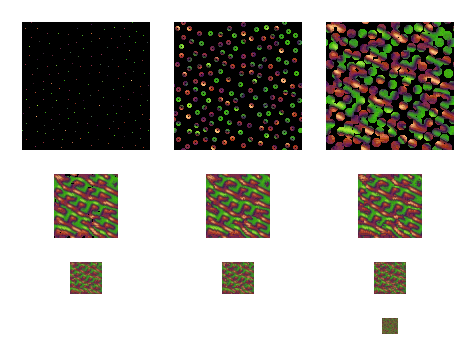Search-based texture synthesis algorithms are sensitive to the order in which
texture samples are generated; different synthesis orders yield different
textures. Unfortunately, most polygon rasterizers and ray tracers do not
guarantee the order with which surfaces are sampled. To circumvent this
problem, textures are synthesized beforehand at some maximum resolution and
rendered using texture mapping.
We describe a search-based texture synthesis algorithm in which samples can be
generated in arbitrary order, yet the resulting texture remains identical. The
key to our algorithm is a pyramidal representation in which each texture sample
depends only on a fixed number of neighboring samples at each level of the
pyramid. The bottom (coarsest) level of the pyramid consists of a noise image,
which is small and predetermined. When a sample is requested by the renderer,
all samples on which it depends are generated at once. Using this approach,
samples can be generated in any order. To make the algorithm efficient, we
propose storing texture samples and their dependents in a pyramidal cache.
Although the first few samples are expensive to generate, there is substantial
reuse, so subsequent samples cost less. Fortunately, most rendering algorithms
exhibit good coherence, so cache reuse is high.


